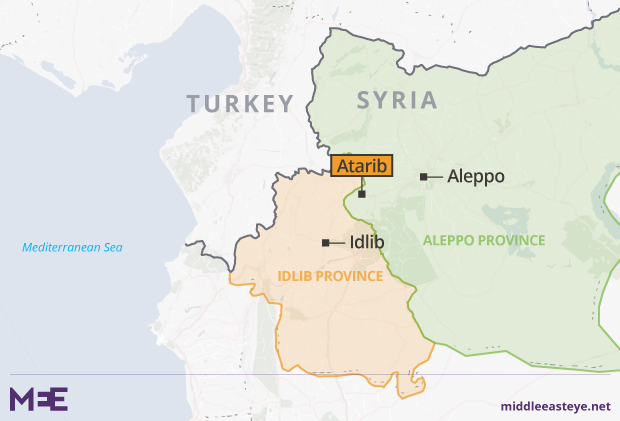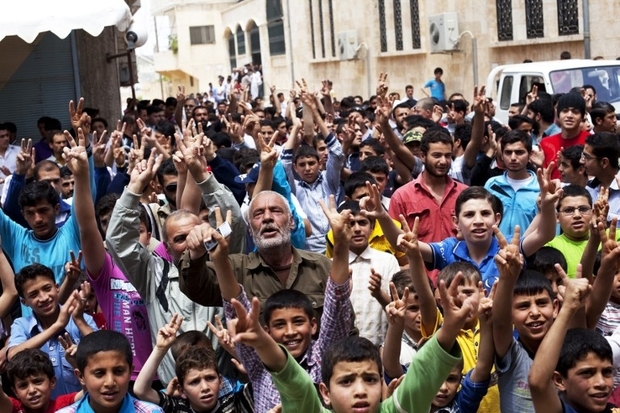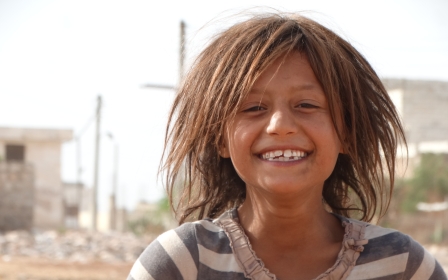Islamic State is defeated but our kidnapped relatives are still missing

Back in August 2013, the Islamic State group kidnapped my 29-year-old cousin Samar Saleh. Since then, I have been waiting for the day that IS prisons are liberated. The recent seizure of the group's last strongholds in the eastern provinces in Raqqa and Deir Ezzor made my dream come true.
Nonetheless, the fate of my cousin - and thousands of other detainees - remains unclear. The long anticipated feeling of joy and relief for the crushing of the group was simply overpowered with mixed emotions of emptiness and anxiety.
Where is she? What happened to her? Is there still hope to see her? No answers have been given to put my mind at ease.
Coercive measures
My cousin was first kidnapped - with her friend Mohammed al-Omar - in my hometown Atarib in the countryside of Aleppo. We searched for her for months but were eventually told that she was transferred to Raqqa following the defeat of IS in northern Syria in January 2014.
Samar - like many other grassroots activists reporting on media and human rights violations - was targeted due to her presence in areas where IS operated.
The group is famous for using different violent and coercive measures - including kidnappings, forced disappearances, assassinations and public executions – to intimidate those who opposed or questioned its actions in order to keep the local population in check.
IS treats its prisoners differently based on their charges. The people who are officially arrested for violating the group's draconian rules and regulations - such as smoking, drinking alcohol, mingling with women etc - are usually detained in formal facilities to be presented in front of the group's self-styled "sharia" court.
The evacuation deal that led to the capture of Raqqa, however, could shed light on the fate of some of the detainees
As for the group's opponents, IS usually denies their capture and keeps them in secret detention facilities. Some prisoners were presented in front of its self-styled courts at a later stage, while the fate of the rest remains unclear.
Consequently, the exact number of people detained by the group remains unclear. But according to a local Syrian human rights organisation, IS detained around 6,318 until September 2014.
The number was amplified later following the announcement of the proclaimed caliphate which was widely rejected by locals.
Where did they go?
The recapture of Raqqa and Deir Ezzor - where IS reportedly established 46 detention centres – did not result in finding any prisoners. Talal Silo, the former spokesman for the Syrian Democratic Forces (SDF) in charge of Raqqa, stated on 18 October in an interview with a local news website SANA that all the prisons they found were empty.
But how can thousands of prisoners just vanish without a trace? The evacuation deal that led to the capture of Raqqa, however, could shed light on the fate of some of the detainees.
After four months of fighting in Raqqa, local tribal leaders brokered a deal between the Kurdish-led SDF and IS. The aim was to save the civilians trapped inside the city by IS where they were used as human shields and spare the city further destruction.
The SDF can still take some actions to reveal the fate of some detainees in order to give their families a closure
Towards that end, the deal allowed IS fighters to escape from Raqqa in exchange for withdrawing from the city. The details of this deal remained largely secret until the BBC was recently able to reveal them. Around 4000 people including women and children were relocated to IS-held territories in Deir Ezzor.
In light of the BBC investigation, the US-led coalition against IS admitted that some 250 of the group's fighters were allowed to leave Raqqa with 3,500 of their family members.
A well informed Kurdish source - who spoke on condition of anonymity as he is not authorised to discuss the topic - contradicted this statement. "Some of the detainees were transported with IS fighters to Deir Ezzor to use them as human shields." But the exact figures remain unclear.
Execution fields!
The number of evacuees suggests, however, that not all detainees are still alive. The same source hinted that there is a high probability that many of the detainees may have faced field execution.
"When ISIS withdraws from a certain area, it usually gets rid of the hostages that are not considered valuable. Foreigners, prominent activists, women - who might be taken as slaves - are usually considered useful. But rival foot soldiers or average male detainees become a liability."
But the high level of destruction in the city makes mass graves difficult to spot. Lending credibility to this assumption, a relevant report published in March 2014 by the Independent International Commission of Inquiry on Syria listed several examples of mass executions of detainees by IS.
The summary killings were committed days - and sometimes hours - before IS bases in northern and north-eastern provinces of Syria were captured by local rebel forces in early 2014.
Despite obvious challenges, the SDF can still take some action to reveal the fate of some detainees in order to give their families closure. IS is known for keeping meticulous documentation on all its operations, especially the prisoners who were processed by its courts.
Such documents were found in one of the detention centres in the Iraqi city of Mosul, which clearly stated the names and details of some prisoners. But the SDF has made no mention of whether local authorities were able to find any documents regarding the fate of the detainees.
The interrogation of captured IS members, especially those who were in charge of prisons, also provides a crucial source of information. Likewise, going through the graffiti on the walls of IS cells could also be used to verify the fate of some prisoners.
But if the SDF, for various reasons, does not have the will or the resources to reveal the fate of thousands of detainees, then independent human rights organisations should be at least allowed to investigate what happened to our missing beloved ones.
- Haid Haid is a Syrian columnist and research fellow at ICSR, Chatham House and Atlantic Council. His research topics include: Security policy, conflict resolution, Kurds and Islamist movements. He tweets @HaidHaid22.
The views expressed in this article belong to the author and do not necessarily reflect the editorial policy of Middle East Eye.
Photo: 29-year-old Samar Saleh was kidnapped by IS in August 2013
New MEE newsletter: Jerusalem Dispatch
Sign up to get the latest insights and analysis on Israel-Palestine, alongside Turkey Unpacked and other MEE newsletters
Middle East Eye delivers independent and unrivalled coverage and analysis of the Middle East, North Africa and beyond. To learn more about republishing this content and the associated fees, please fill out this form. More about MEE can be found here.







